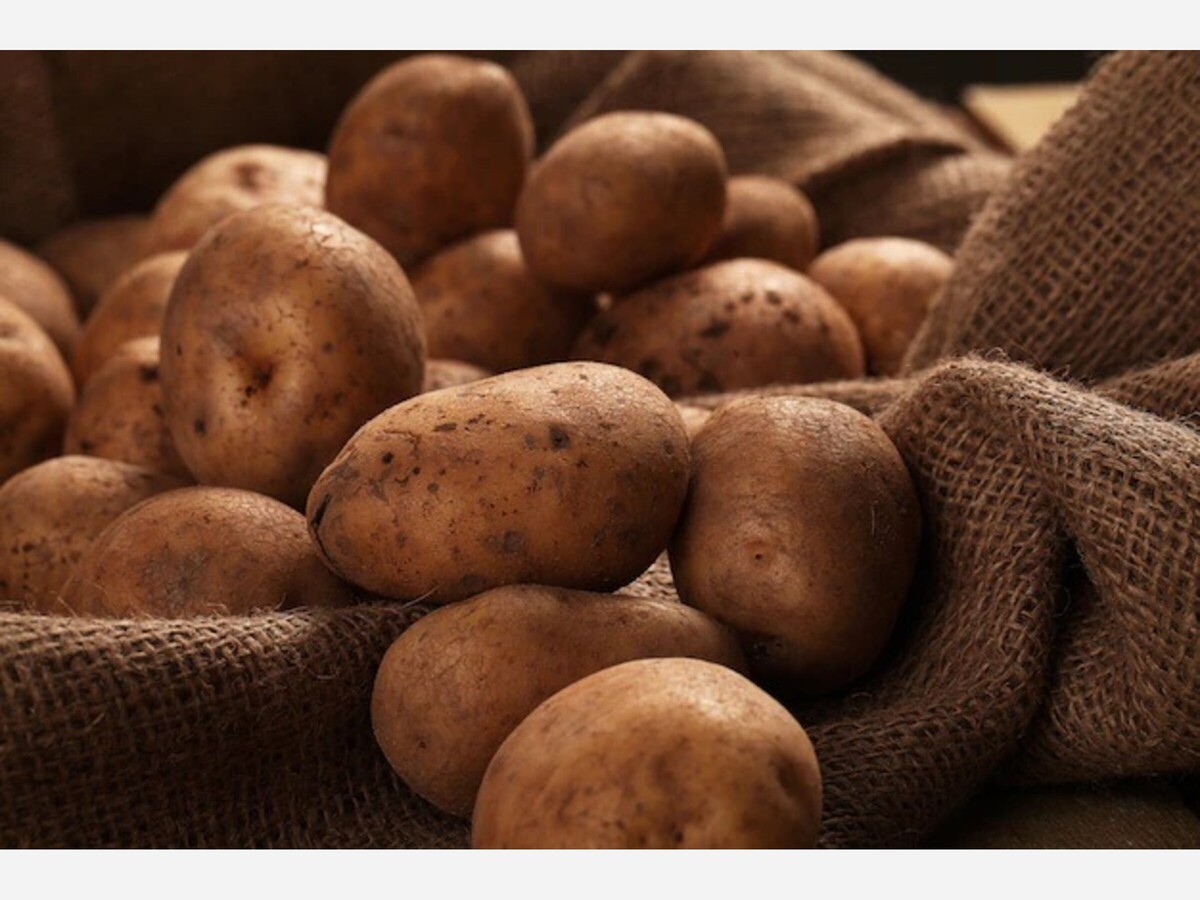Image

by Bob Wood
It seems that in the old days the Dutchmen lived on pigs, pies, and potatoes, with sometimes all three in the same recipe. In the folk-culture the omnipresent potato was, and still is, used in potato filling, pot pies with cut-up potatoes, potato donuts (fastnachts), various potato soups, mashed potatoes, potato cakes, and potatoes boiled, fried and baked in every conceivable way, even “potato peel pie.”

It’s surprising, then, that potatoes, like pies, were not brought by the early Germanic immigrants who came without potato recipes or a potato tradition.
Columbus recorded finding “potatoes” growing throughout the Caribbean Basin, but these were sweet potatoes, the tubers of a member of the morning glory family and unrelated to Solanum tuberosum, our white potatoes.

The potato botany family also encompasses tomato, petunia, tobacco, and deadly nightshade, among others.
Potatoes were native to a very small part of South America, the high sierra of the Andes above 11,000 feet, where maize, the stable food of the South American Indians, would not grow. Botanists conclude that the potato had been domesticated in the highlands of Peru by at least 3,000 B.C. It remained restricted to that area until brought to the rest of Latin America by the Europeans.

Spanish explorers took potato tubers home with them where they were grown in a few gardens as an experimental curiosity. They were also taken back to England as provisions by some discouraged Virginia colonists where they became known as Virginia potatoes. (How they came by them in Virginia is a long story.)
Potatoes were generally unnoticed in 18th century Europe, or regarded as animal feed or mere provender to stave off starvation for the very lowest social classes.
About potatoes among the Germans, Waverly Root records in his book “Food”: “Frederick William I, disturbed by disastrous failures of cereal crops, imposed the planting of potatoes on Prussian peasants about 1720 under pain of draconian punishment.
The peasants seem to have been less than obedient, for in 1750 Frederick the Great was obliged to repeat the decree, which the peasants continued to disobey. Convinced that potatoes caused leprosy, they pulled up the potatoes that Frederick had planted, obliging him to post soldiers to guard the fields where they were growing.
He finally won over his subjects, the story goes, by eating potatoes publicly himself on the balcony of his palace; but in 1774 when the citizens of Kolberg were struck by famine and Frederick sent wagon loads of potatoes to the city, the starving inhabitants refused to touch them.”
Local researcher Abe Roan notes that the first reference to potatoes in this region is in the journals of Schwenkfelder surveyor and farmer David Shultz ( The Journals and Papers of David Shultze: Tr.&Ed. by A.S. Berkey published by the Schwenkfelder Library 1952) where in 1774 Shultze cites under remedies, “For a burn for hot water, peel a potato and place the peeling on the burn. This draws out the heat.”
The first time he refers to planting potatoes is June 10-11 1782. “Planted corn and potatoes and continued plowing the upper field.” Later researchers have, however, found earlier reverences to potatoes in Shultze’ diaries.
In the early 19th century potatoes slowly became acculturated into the folk cuisine. Instead of simply cutting up remnants of last year’s crop and planting the eyes to form new stalks, plant breeders then began controlled pollination and collecting seed to form new and more robust varieties.

By the end of that century, varieties of potatoes had become major field crops and were grown on most every farm. Kept cool and dark, they lasted many months into the winter.
Bucks County farmer and school master John Landis wrote in his diary, May 2, 1885, “Planted Monmouth Pearl Potatoes out in the field.” August 27, 1885. “Put slug shot on the potatoes out in the field.” August 28, 1885, “Went to look at the potatoes, slug shot no good.” August 29, 1885, went to the potato field with water and Paris green.” (Paris green was a copper-based insecticide). September 26, “Dug up the Monmouth Pearl potatoes and got a two-horse body [wagon] full. The children helped.”

Sweet potatoes too were widely cultivated in 19th century New Hanover as a field crop. Their winter storage was rather the opposite of white potatoes that had to be kept in the cellar: cool, moist, and dark. Sweet potatoes were kept dry and warm, often up-stairs in a barrel near the stove pipe.
